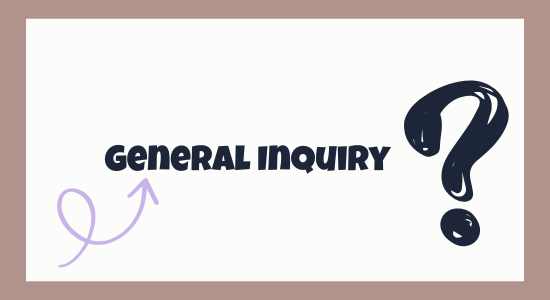
Understand These Two Renewable Energy Sources Step-by-Step
I Don’t Get How These Power Plants Actually Work…
If you’re studying renewable energy or environmental science, chances are you’ve come across terms like biogas and hydroelectric power plants. And chances are, you might’ve felt a bit lost when trying to explain how they work—or even worse, trying to remember them during an exam.
You're not alone.
Many students struggle with this topic because the explanations in textbooks often feel abstract. They throw in technical terms, complicated diagrams, and skip over the real-world relevance. So, you’re left memorizing stuff without actually understanding how these systems work or why they matter.
And when it comes to exams or even job interviews where energy systems come up—you freeze.
Why Misunderstanding This Can Hurt More Than You Think
Let’s be honest. Misunderstanding how biogas and hydroelectric power plants function doesn’t just mean losing a few marks on a test.
It’s bigger than that.
These technologies are part of the real-world shift to cleaner, sustainable energy. Countries, companies, and communities are investing in them. If you're planning a career in science, engineering, environmental policy, or sustainability, understanding these systems is a must.
More importantly, you’re the generation that will deal with climate change, energy crises, and sustainability decisions. If you don’t understand the tools we’re using—like biogas and hydro plants—how will you ever innovate, manage, or even critique them?
So let’s clear the fog.
By the end of this post, you’ll not only be able to explain how these systems work—you’ll also see their real-world applications, strengths, limitations, and how they connect to the bigger energy picture.
Break It Down. Step by Step. With Examples.
Let’s start with biogas, then move to hydroelectric power plants.
Part 1: How Do Biogas Power Plants Work?
Step 1: What Is Biogas?
One form of biofuel that is naturally created by the breakdown of organic waste is biogas. This includes food scraps, animal manure, plant material, and even sewage.
When this organic matter breaks down in an environment without oxygen (called anaerobic digestion), it produces a gas mixture—mostly methane (CH₄) and carbon dioxide (CO₂).
This gas can be captured and used as fuel for generating electricity, heating, or even as vehicle fuel.
Step 2: The Main Components of a Biogas Plant
Let’s break down what happens inside a typical biogas plant:
- Feedstock Input
Organic waste is collected and dumped into a sealed tank. This includes:- Cow dung
- Kitchen waste
- Agricultural residue
- Sewage sludge
- Anaerobic Digester
This is the airtight container where bacteria break down the organic matter. Since there's no oxygen inside, special bacteria (anaerobes) thrive and convert the waste into gas. - Biogas Output
The methane-rich gas rises to the top and is collected. It can now be:- Burned to produce electricity
- Used for cooking or heating
- Cleaned and compressed for vehicles (like CNG)
- Slurry Output (Digestate)
The leftover material, known as digestate, is rich in nutrients and used as organic fertilizer.
Step 3: Real-Life Example – India’s Rural Biogas Plants
India has over 5 million small-scale family-type biogas plants. Farmers use cow dung and kitchen waste to generate gas for cooking. The digestate? Used to fertilize crops.
Larger-scale municipal plants, like in Pune or Indore, use city waste to generate electricity for local use or sell it to the grid.
This system:
- Reduces reliance on LPG or wood
- Manages waste sustainably
- Reduces greenhouse gas emissions
Step 4: Advantages and Limitations
Advantages:
- Renewable and clean
- Reduces landfill use and waste
- Provides energy security in rural areas
- Digestate improves soil health
Limitations:
- Initial setup cost
- Needs a regular supply of organic waste
- Gas production can be inconsistent
Still, for many rural and semi-urban communities, it’s a game-changer.
Part 2: How Do Hydroelectric Power Plants Work?
Step 1: What Is Hydroelectric Power?
Hydroelectricity is electricity generated using the force of moving water—usually from a river or dam. The basic idea is to convert kinetic energy (moving water) into mechanical energy (spinning turbines) and finally into electrical energy (generators).
Water has mass. When it flows with speed—especially from a height—it carries energy. Hydropower captures that.
Step 2: The Basic Structure of a Hydroelectric Power Plant
Here’s how it works step by step:
- Dam Construction
A large dam is built on a river to create a reservoir (artificial lake). This stores water and increases its potential energy. - Intake
When electricity is needed, gates open to let water flow from the reservoir through large pipes called penstocks. - Turbine
The moving water strikes the blades of a turbine, causing it to spin. This is where kinetic energy becomes mechanical energy. - Generator
The spinning turbine is connected to a generator, which converts the mechanical energy into electrical energy via electromagnetic induction. - Power Lines
The electricity is sent to homes, factories, and cities via the power grid. - Tailrace
The used water is released back into the river through a channel called the tailrace.
Step 3: Real-Life Example – The Three Gorges Dam (China)
The Three Gorges Dam on the Yangtze River is the world’s largest hydroelectric power station. Its capacity? Around 22,500 megawatts.
Tens of millions of houses could be powered with that much.
Benefits of the dam:
- Clean energy production
- Flood control for downstream cities
- Improved shipping navigation
However, it’s also faced criticism due to environmental and displacement issues. And that’s an important lesson: energy systems have trade-offs.
Step 4: Types of Hydroelectric Plants
Not all hydro plants are massive dams. Here are three types:
- Impoundment (Dam-Based): Like the Three Gorges or Hoover Dam. Large-scale, stable supply.
- Run-of-the-River: Uses natural river flow, minimal storage. Less disruptive but can vary seasonally.
- Pumped Storage: Works like a battery. When demand is low, water is pushed upward, and when demand is high, it is released.
Each type serves a different need, depending on geography, economics, and energy demand.
Step 5: Advantages and Limitations
Advantages:
- Renewable and clean
- Stable and reliable
- Supports grid stability
- Low operational costs after setup
Limitations:
- High initial cost
- Ecological impact (disrupts river systems, aquatic life)
- Community displacement (in large dam projects)
- Not suitable for drought-prone regions
| Feature | Biogas | Hydroelectric |
| Source | Organic waste | Flowing water |
| Scale | Small to medium (household to city) | Medium to large (city to national grid) |
| Cost | Low to medium | High initial cost |
| Reliability | Depends on waste supply | Very stable |
| By-products | Fertilizer (digestate) | None (just released water) |
| Main use | Cooking, heating, electricity | Large-scale electricity generation |
Real-World Impact
Both of these systems are part of the renewable energy toolkit. They help countries reduce dependence on fossil fuels, cut emissions, and create decentralized, sustainable solutions.
Biogas is great for:
- Rural households
- Farms
- Waste management in cities
Hydropower is ideal for:
- National power grids
- Stable, clean electricity
- Energy storage (via pumped systems)
________________________________________
So, What Should You Remember?
- Biogas is made by bacteria breaking down organic waste without oxygen → produces methane → used for fuel.
- Hydroelectricity uses the movement of water (often from a dam) to spin turbines → generates electricity.
- Both systems are renewable, but serve different needs and have different setups.
- Real-world examples: Small biogas plants in India, massive hydro plants like the Three Gorges Dam.
- Understanding how they work helps you in academics, careers, and practical problem-solving.
Think about this:
If you had to design a sustainable energy system for a village—would you use biogas? Hydro? Something else?
Try sketching a simple flowchart for each system. Explain it to a friend. If you can teach it, you really know it.
And next time you see a question on renewable energy—you won’t just remember facts. You’ll understand the system.
0 Comments
-
Comments will be injected here via JS












Post a Comment